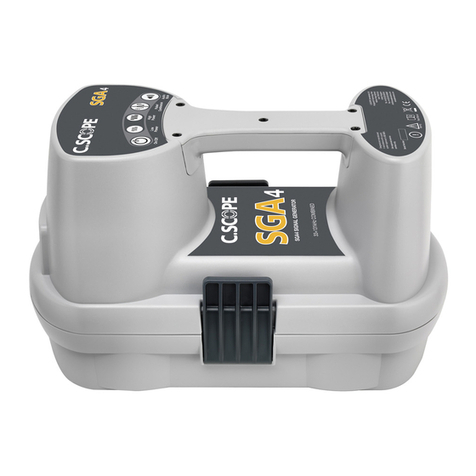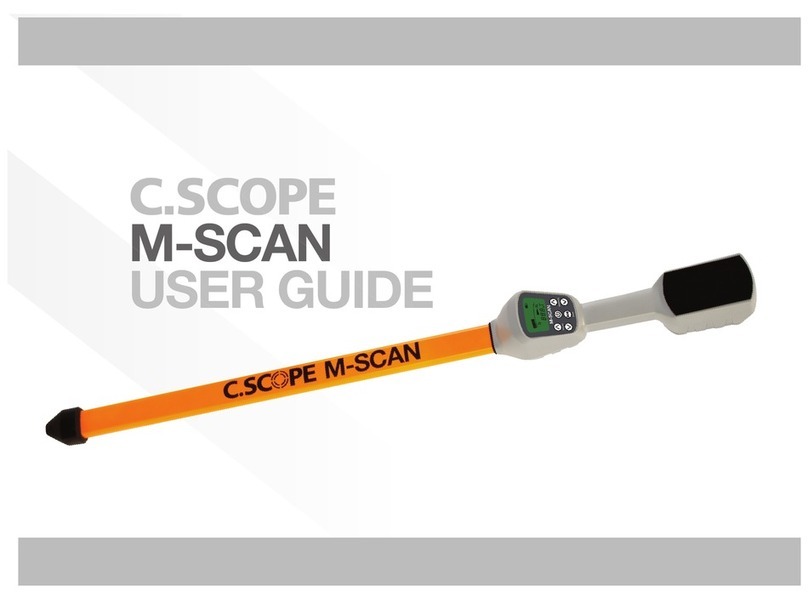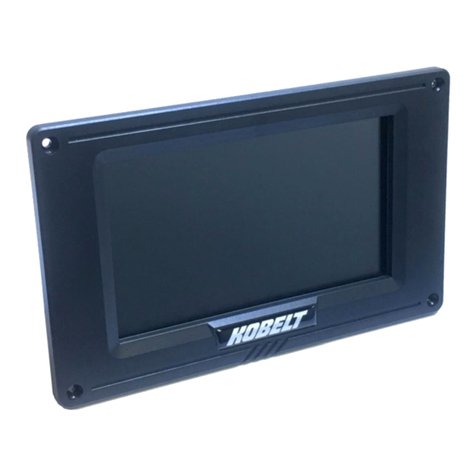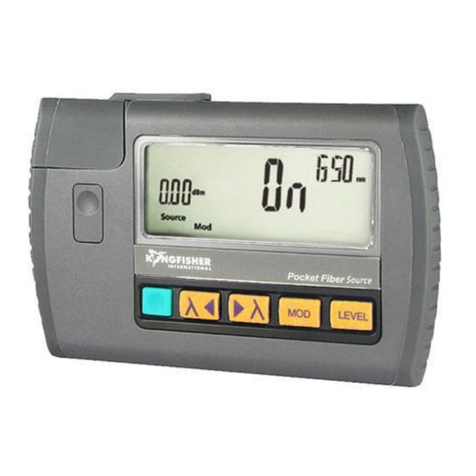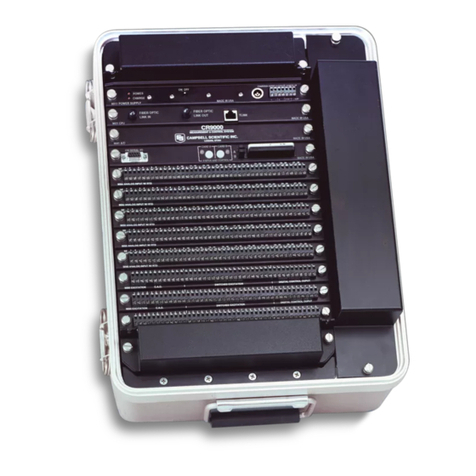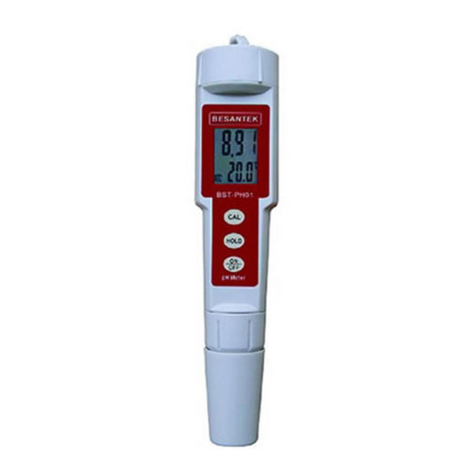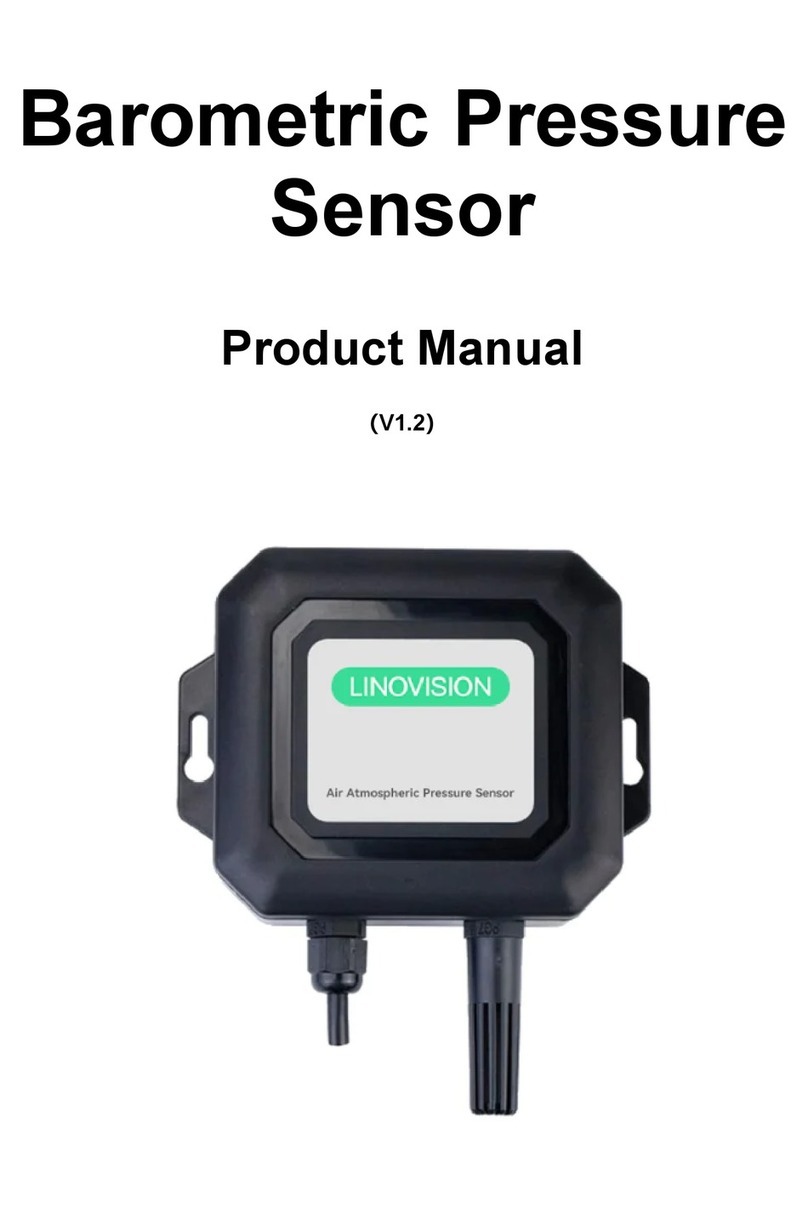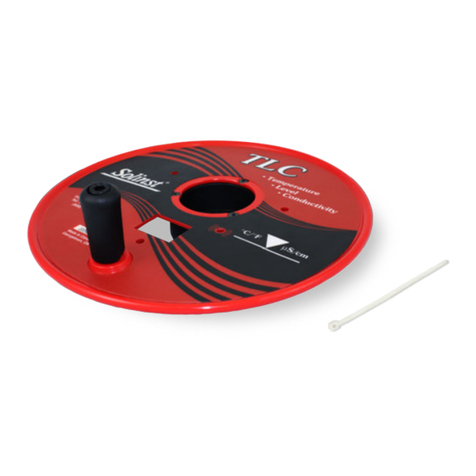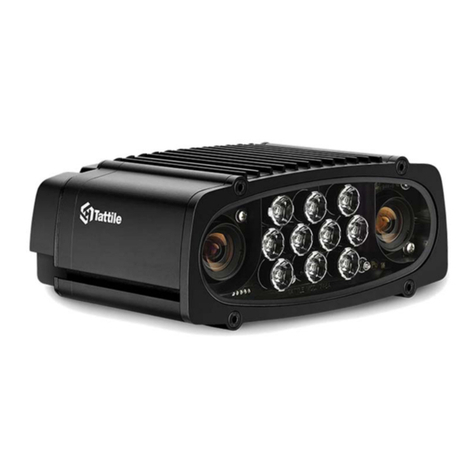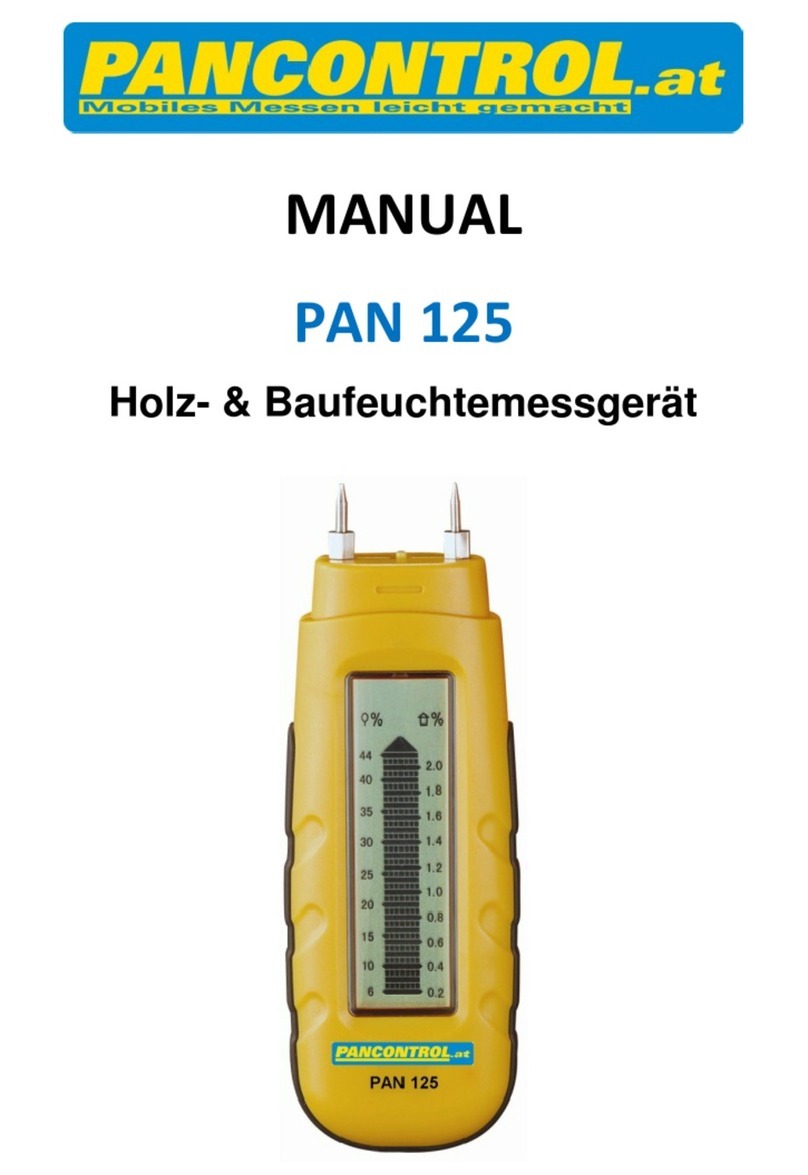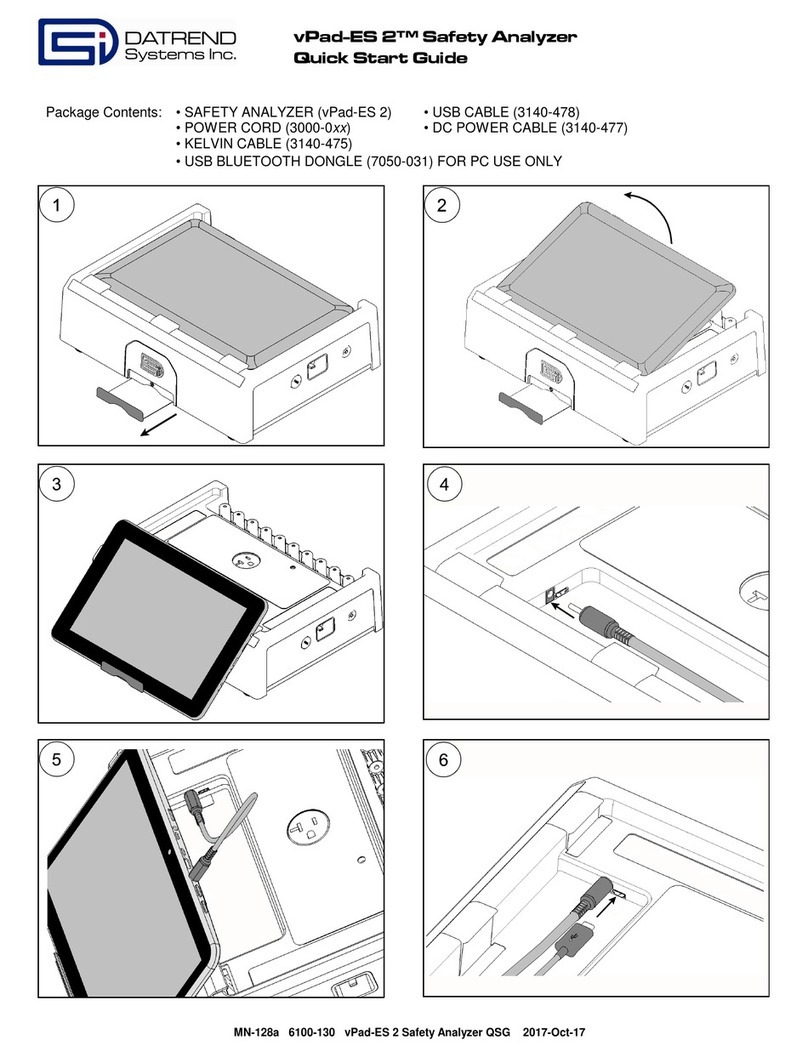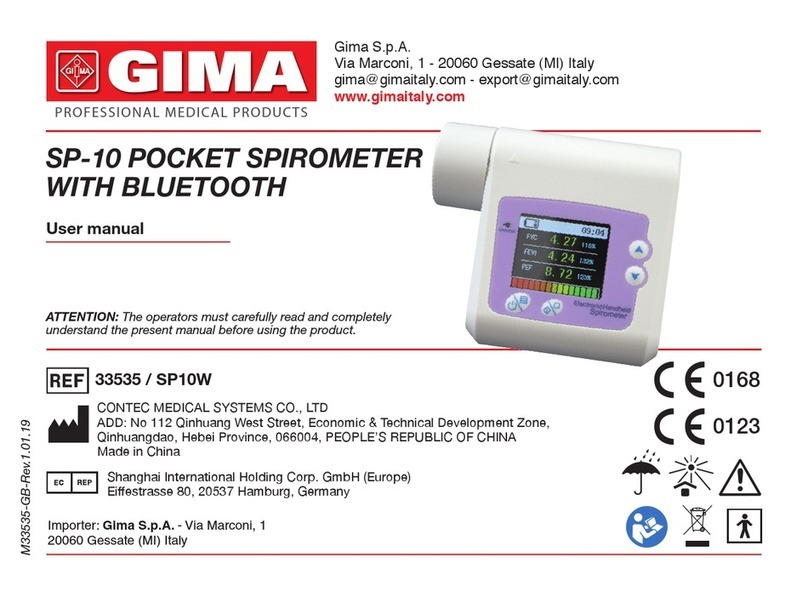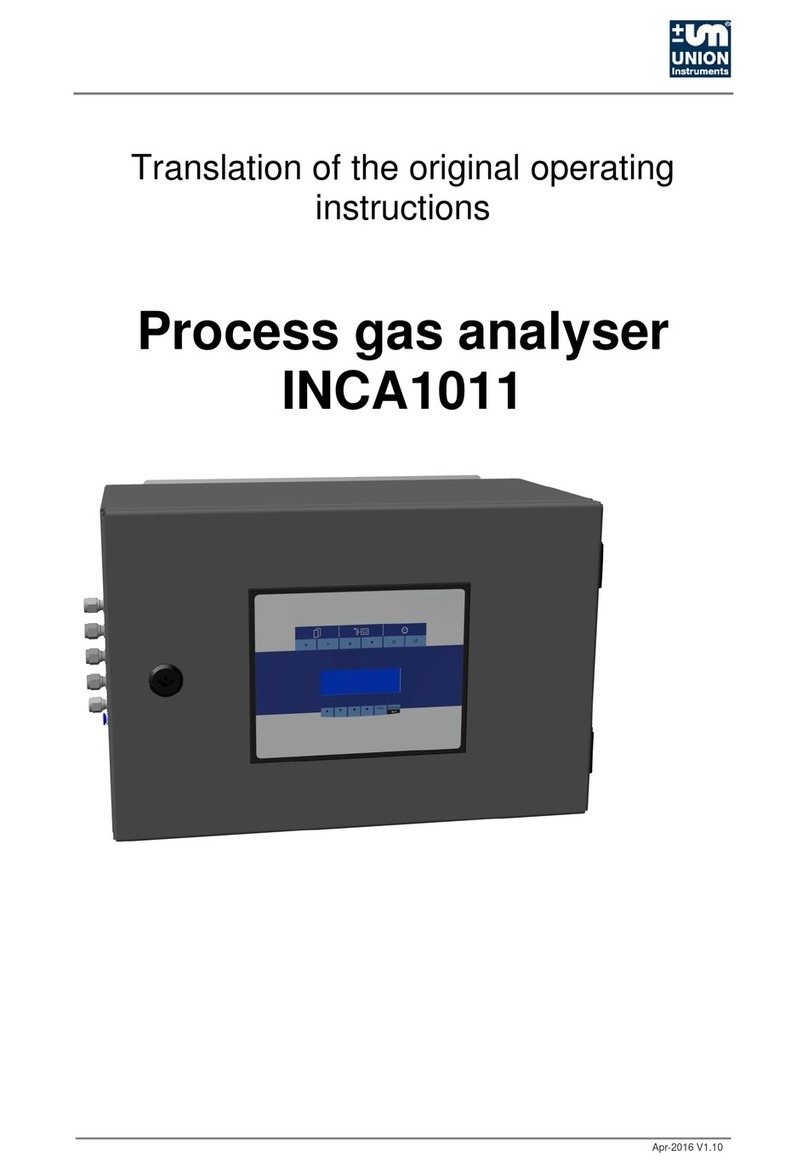C-SCOPE CS990XD User manual

CS990XD
Operating Instructions

2
Operating Instructions
A Battery Compartment
B Upper Stem & Handle Grips
C Control box
D Stem Lock
E Cable
F Lower Stem
G Search Head & Fastener
A
F
E
D
C
B
G
INTRODUCTION
To protect your investment complete both sections of the enclosed guarantee
card and return to C-Scope. This is particularly important in order to obtain the
four years parts guarantee. Please retain the original packing box. In the event
that your detector should ever require to be serviced, this package will be most
suitable for postal protection.
C-Scope detectors are recognised as the finest detectors available. They are
designed with lasting quality, high technology, and above all, value for money.
The only way to realise this value is to carefully study and understand this
instruction manual. You will then be able to obtain all the advantages designed
into your detector. It is also strongly recommended that you experiment with
the detector’s operation in air using various test samples, in order to learn
to identify and understand the detector’s capabilities and responses.
Always remember that becoming a good metal detectorist is like
becoming a good photographer or fisherman, that is, although it
is an advantage to buy the best equipment,
having bought it, patience and hours
of practice are needed to
become proficient.
CS990XD
Operating Instructions

3
ASSEMBLY
Insert the lower stem into the upper stem. Tuck the cable into the cable slots in the
lower stem to prevent it trailing over the search head. Rotate the lower stem to wrap
the cable around the stems and take up any slack and twist the stem lock to hold the
lower stem in position.
BATTERIES
The CS99OXD is powered by eight AA batteries (not supplied). It is advisable
to use standard alkaline batteries to start with. You can then evaluate the sort of
use you give the detector and decide whether the investment in rechargeables
is justified. The batteries should be fitted in the holder which is located in the battery
compartment. To fit new batteries first check the power switch on the unit is
switched to off. Then loosen the two captive screws located in the battery cover
(do not fully remove these from the cover) and remove the cover. Inside is the
battery holder. Lift out the holder and detach the plug on connector. Load the holder
with the eight batteries ensuring that each battery is inserted the correct way round,
(direction of batteries alternating as shown on the holder). Roll each individual
battery to ensure it is located correctly and making proper contact. Replace the
connector making sure that it is well seated, and put the loaded holder into the
housing. Fit the cover and tighten the two captive screws finger tight.
Note: Zinc Carbon batteries should not be left in the detector for long periods where
they could leak, so remember to remove them at the end of a day’s searching.
H Charger Socket
I Headphone Socket
J Battery Compartment
H I
J
Operating Instructions

4
HOW IT WORKS
Inside the 990XD are two separate detectors operating simultaneously. An ‘inland’
detector which is factory set to ignore mineralised inland ground and gives a positive
response to all metals, and a ‘beach/disc’ detector operating at the (adjustable) wet
salt sand exclude level, which gives a negative response to iron.
By using the switches on the front of 990XD to combine the signals from the above
two detectors, it is possible for the operator to detect all targets whilst eliminating the
effects of the ground, and at the same time distinguishing between the good and
reject targets.
Detection is indicated by the loudspeaker (the loudspeaker is located in the rear of
the battery compartment), and by the meter (on the facia panel) needle moving.
THE CONTROLS AND WHAT THEY DO
Operating Instructions
Signal meter
L ON/OFF switch & Tune control
M Level control & Battery check
N Ground exclusion switch
O Retune push button
P Disc mode switch
N
O
ML
P

5
ON/OFF SWITCH AND TUNE CONTROL
This control is a combined on/off switch and rotary tune control. Fully anticlockwise
to the clicked position is power ‘off’.
To turn ON the detector rotate the control clockwise from the OFF position. For best
performance the TUNE control should be adjusted to threshold, when the sound is
just beginning to break through, since this is when the ear is most sensitive to small
changes, and it is important to maintain this threshold when searching to achieve
maximum depth.
The meter gives a visual indication of the signal level (unless batterycheck or meter
disc is selected) and will read midscale when tuned at threshold.
The tune control is used in conjunction with the retune button, which should be
depressed when making adjustments to the controls.
RETUNE PUSH BUTTON
Should the audio level change during searching other than that resulting from a
target, such as from drift occurring from warming up (see paragraph ‘search head),
press (and release) the ‘retune’ button to recover the threshold sound as set on the
tune control. The ‘retune’ button should also be held down when making adjustments
to any of the detector’s controls.
GROUND EXCLUSION SWITCH
Firstly what is groun exclusion?
On some sites mineralisation caused by iron deposits and iron oxides makes it
difficult to operate a detector successfully. The effect of these minerals is termed
ground effect. In practice, if the detector is not correctly adjusted, the signal alters
if the search head is not swept at a constant height above the ground. However
by operating the detector at the correct ‘exclude’ point this ground signal can be
eliminated. The elimination of this signal is known as ground effect exclusion or
simply ground exclusion. When operated at the INLAND ground exclude point
all metals give a positive response so this is sometimes called all metal mode.
Like mineralised ground, metals and wet salt sand too, have a characteristic
exclude point. When operated at the BEACH ground exclude point, iron and
small ferrous items produce a negative response, but valuable targets still
produce a positive signal.
LEVEL control
The discrimination level of the ‘beach/disc’ detector in the 990XD is centred at about
that of wet salt sand but can be varied from iron reject through to aluminium foil
reject by adjusting the ‘level’ control. (The ‘level’ control also adjusts the exclude
point of ‘meter disc’ and ‘meter and audio disc’).
Operating Instructions

6
INLAND an DISC MODE SWITCH
With INLAND selected the 990XD operates at a fixed level of ground exclusion.
This INLAND ground exclude point is factory set on the 990XD. All metal targets will
produce an increase in audio volume in this mode regardless of the ‘level’ control
setting. The ‘beach/disc’ detector remains operating and can be selected to drive
the meter or control the audio pitch by selection on the ‘disc mode switch’. The level
of discrimination of the beach/disc detector can be adjusted by the ‘level’ control.
The INLAND mode is used on mineralised inland sites and can be used in
conjunction with any one of the disc modes described below.
- By selecting METER DISC mode the meter needle moves to the right for good
targets and to the left for reject targets.
- By selecting METER + AUDIO DISC mode the meter moves to the right for good
targets and to the left for reject targets, and the audio pitch increases for good
targets and decreases for reject targets.
- By selecting NONE the meter needle moves to the right for all targets and the pitch
remains constant.
BEACH an DISC MODE SWITCH an LEVEL control
Due to the varying nature of beach soils (the salinity and wetness) the 990XD is
equipped with an adjustable level of ground exclude in ‘beach’ mode. It is the mode
best suited to beach detecting where fine adjustment of the ‘level’ control is required
to exclude wet sand.
- By selecting ‘meter disc’ mode the meter needle moves to the right for good targets
and to the left for reject targets.
- By selecting ‘none’ the meter needle moves to the right for good targets and to the
left for reject targets (same as meter disc since it is in beach mode).
- Selecting ‘meter + audio disc’ gives a pitch increase to good targets, reject targets
are ignored. The inland detector plays no part when ‘beach’ mode is selected and is
switched off. Only use this beach mode on the beach or at inland sites where there
is no mineralisation and where you do not wish the detector to sound off over iron.
It should be apparent from the above that the ‘level’ control acts primarily as
ground exclude control in ‘beach’ mode, and secondly varies the discrim point
when operating in ‘meter disc’ or ‘meter and audio disc’ mode.
BATTERY CHECK
A battery condition indicator is provided on the detector. Turn the power on/off, tune
control on. Turn the Level control fully anti-clockwise to the battery check position.
The meter will indicate in the green battery symbol area if the batteries are good.
Rechargeable batteries will not read as high into the green as standard batteries
even when fully charged. They also give less indication of discharge on the meter
during use. Remember to switch out of ‘batt check’ when you have checked the
batteries.
Operating Instructions

7
GENERAL HINTS
Detection Range
Your CS990XD is a top performance detector but adverse soil conditions can
significantly reduce the depth of detection.
Detection ranges will vary depending on the size of the object, the length of time
an object has been buried, and the type of ground the object is buried in.
The best ground conditions are well compacted soils and coins can be found at
the greatest depth if the object has been buried for some time and the coin has
interacted with the salts in the ground, thereby appearing larger to the detector.
Worst conditions for detecting are on loosely compacted or freshly dug ground or
when the object has only recently been buried. In these conditions detection range
will be reduced.
Anomalies
Iron, unlike a coin, occurs in a multitude of shapes and sizes and as a result it is
possible that large pieces of iron may give a positive reading. Confusing signals can
occur in the first few cm below the search head, and are typically characterised by
a double signal from the same object, usually iron, which often ranges from a strong
positive to a strong negative signal. To overcome these problems simply raise the
search head, retuning if necessary, and rescan until a clear signal of rejection or
acceptance is obtained.
Hea phones
Use stereo headphones. Use of head phones is recommended as it eliminates
extraneous noises and will extend the battery life. Insertion of headphones
automatically mutes the loud speaker. The 6.35mm (quarter inch) head phone
socket is located on the front of the battery compartment.
OPTIONAL ACCESSORIES from C-SCOPE
Hea phones
Enclosed stereo headphones with coiled lead.
Battery charger
The C-Scope battery charger is designed to charge the individual cells quickly
and safely.
Search hea cover
This provides protection to the underside of the search head when detecting in
muddy or stony conditions without affecting performance.
Operating Instructions

8
SWEEPING TECHNIQUE
For extremely small object searching, such as coins, rings, nuggets, etc. lower the
search head to within 2.5 cm of the ground. Sweeping the coil from side to side in
a straight line in front of you. eep the coil at a constant height as you sweep from
side to side. Move the head at a rate of 0.5 metre per second.
The optimum sweep rate must be determined by each operator. The detector should
be held comfortably in the hand, with the head held as closely to the ground as
possible. As the detector is scanned from side to side in front of the operator, the
search head should be advanced approximately two-thirds the diameter of the coil.
This keeps the operator moving ahead, and it allows some overlapping of each
sweep. this overlapping ensures that nothing will be missed. It is well to note here
that the operator should not rush. This is one of the most common mistakes made
by detector users. If you rush, you will not adequately cover the ground.
THE COUNTRY CODE
Follow the ‘Country Code’. Do not trespass. Do not touch anything you suspect might
be live ammunition - inform the police.
Do not take your detector on any scheduled historic site. If you find anything which
looks like it could have historical significance, report it to your local museum.
Acquaint yourself with any laws relating to the use of metal detectors particularly if
you want to go detecting in countries other than the U .
DETECTOR CARE
The CS990XD is a robust design, however the control box should be treated with
similar care as any electronic product. Dry off any water splashes immediately.
The search-head may be immersed in water. Stem and search-head parts should
be cleaned and dried at the end of a day’s detecting. Do not use solvents. If the
detector has been used on a beach it will be necessary to wash sand and salt
residue off the stem adjustment mechanism and the search-head retaining parts
using tap water. Remove batteries if the detector is going to be stored for any length
of time. Do not open the controlbox front panel. There are no user serviceable parts
inside and you may invalidate your warranty.
Operating Instructions

9
TROUBLESHOOTING
Problem Meter nee le oes not move as you a just the
‘tune’ control.
Possible cause The detector is in ‘meter disc’ or ‘meter and audio disc’
Solution Switch mo e switch to ‘none’.
Problem Meter nee le appears to be stuck.
Possible cause The ‘level’ control switched has been left in ‘batt check’
position?
Solution Switch out of ‘batt check’.
Problem New batteries fitte but unit will not switch on.
Possible cause Batteries are not making contact in the battery holder.
Solution Remove the battery hol er an roll the in ivi ual batteries
in the hol er.
Problem New batteries fitte but battery check rea ing
in icates low.
Possible cause One battery inserted incorrectly.
Solution Remove the battery hol er an reverse incorrect battery.
Problem Detector is switche ‘on’ but appears not to be working.
Possible cause Headphone adaptor left in headphone socket.
Solution Remove the a aptor.
Problem Detector oes not work on hea phones.
Possible cause Stereo/mono headphone switched to mono.
Solution Switch hea phones to stereo.
Operating Instructions

10
Operating Instructions
C.SCOPE is an ISO 9001 Quality Manufacturer.
This equipment conforms to the EMC directive 2004/108/EC.
System performance may be impaired by unusually strong electromagnetic fields.
Waste electrical products should not be disposed of with household waste.
Please recycle where facilities exist. Check with your local authority or
retailer for recycling advice. (In the U visit www.recycle-more.co.uk)
CAUTION
It is the user’s responsibility to use this product and dig only where it is safe to do so.

Operating Instructions

B1065 Issue 3
Operating Instructions
C.SCOPE INTERNATIONAL LTD
INGSNORTH TECHNOLOGY PAR
WOTTON ROAD
ASHFORD
ENT
TN23 6LN
TELEPHONE: +44(0)1233 629181
FAX: +44(0)1233 645897
EMAIL: [email protected]
WEB: www.cscope.co.uk
Other manuals for CS990XD
2
Table of contents
Other C-SCOPE Measuring Instrument manuals
Popular Measuring Instrument manuals by other brands
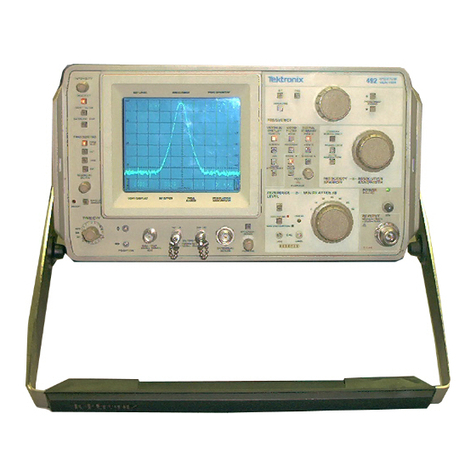
Tektronix
Tektronix 492, 492P Operator's manual
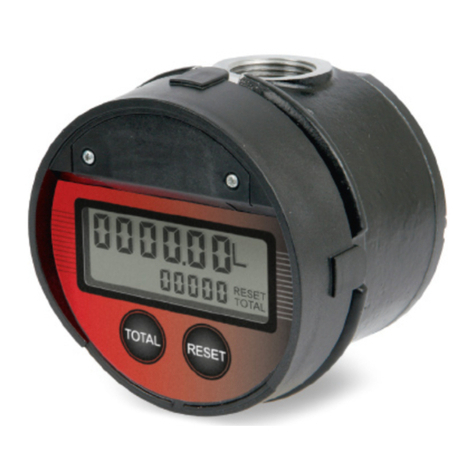
Badger Meter
Badger Meter LM OG Series Instructions for use and maintenance
Fluke
Fluke TRACKER 90100 Operators Operator's manual
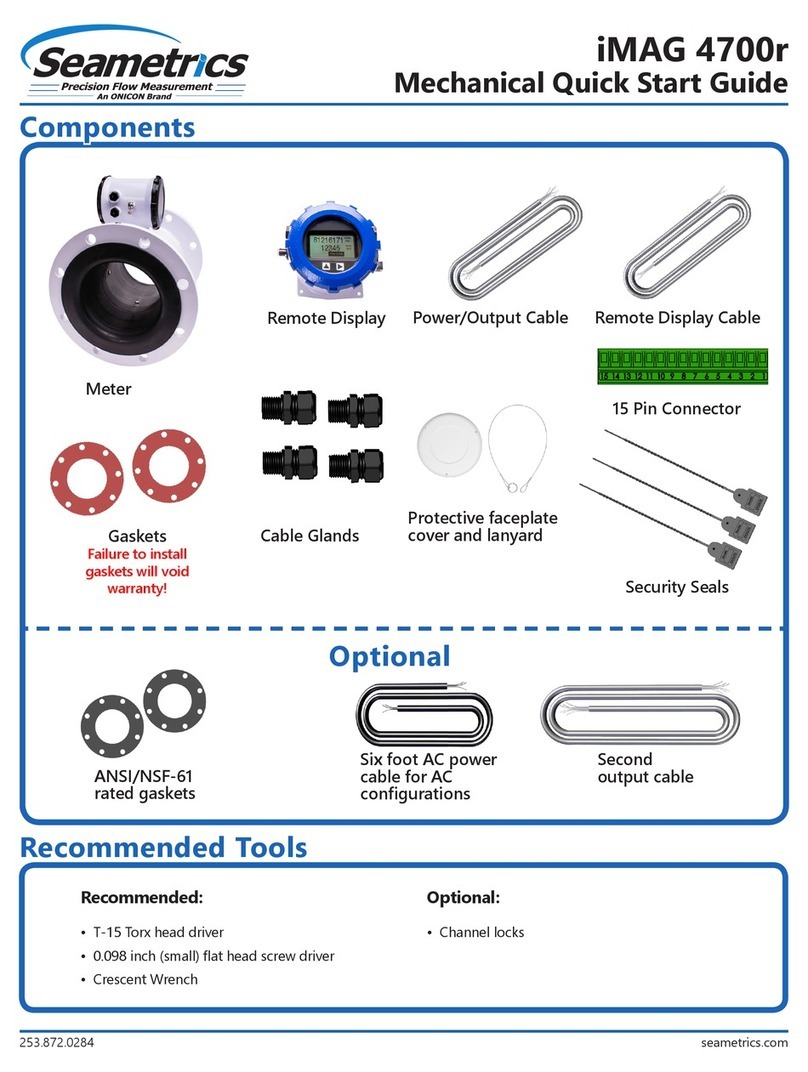
Seametrics
Seametrics iMAG 4700r quick start guide
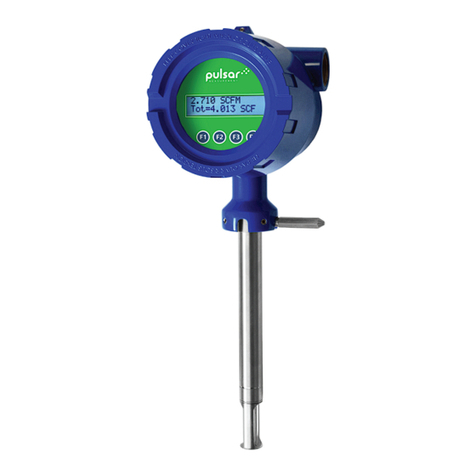
Pulsar
Pulsar MDot instruction manual
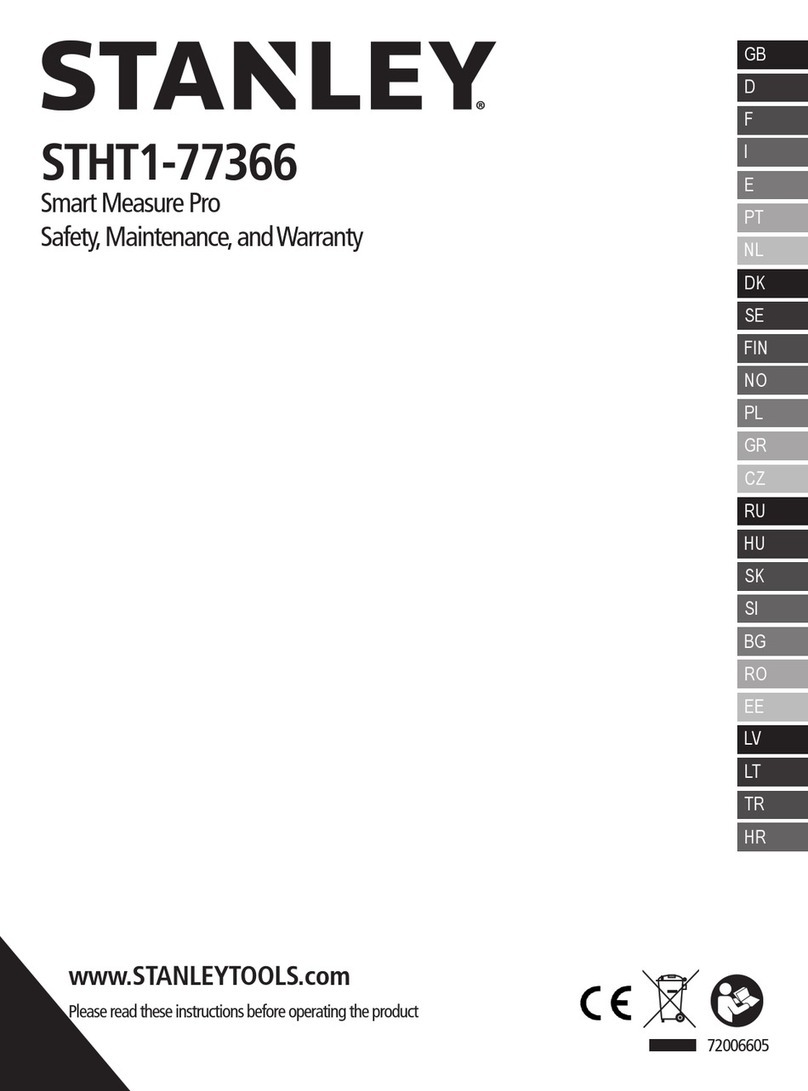
Stanley
Stanley STHT1-77366 Safety, Maintenance and Warranty
